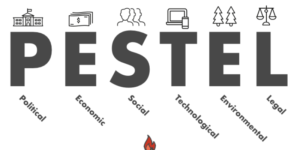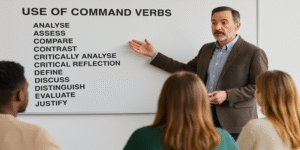In today’s competitive job market, telephone interviews have become an integral part of the recruitment and selection process. Employers increasingly use them as an efficient and cost-effective screening tool before inviting candidates for face-to-face interviews (Silvester, Anderson & Haddleton, 2000). As remote work and digital communication expand, telephone interviews serve not only as logistical conveniences but also as vital assessments of a candidate’s communication skills, professionalism, and preparedness. This article examines what happens during telephone interviews, how candidates can best prepare, and how to demonstrate confidence and competence throughout the process.
The Purpose and Nature of Telephone Interviews
Telephone interviews are primarily designed to screen candidates quickly and verify essential qualifications before more resource-intensive interviews are scheduled (Chapman & Webster, 2003). According to Bauer, Truxillo and Paronto (2004), organisations view telephone screening as a means to narrow down large applicant pools while maintaining fairness and consistency.
The format of a telephone interview can vary depending on the organisation. In smaller firms, interviews tend to be informal and conversational, often conducted by a manager or team leader. Larger corporations, by contrast, are more likely to use structured or semi-structured interview formats to ensure standardised assessments across all applicants (Silvester et al., 2000).
Some organisations even employ automated telephone systems, known as interactive voice response (IVR) interviews, where candidates respond to pre-recorded questions using keypad inputs or voice recognition (Bauer et al., 2004). These automated systems, though impersonal, help employers manage high application volumes efficiently.
Typical telephone interview questions include:
- “Why are you interested in this position?”
- “Can you tell me about your qualifications and experience?”
- “What do you know about our company and industry?”
- “What are your strengths and weaknesses?”
These questions help interviewers evaluate both motivation and fit for the role. Employers often assess the clarity, enthusiasm, and confidence with which candidates present their answers—qualities that can substitute for visual cues available in face-to-face settings (Jeske, Shultz & Owen, 2018).
Preparing for a Telephone Interview
Preparation is the foundation of a successful interview. Candidates who treat a telephone interview with the same seriousness as an in-person one are more likely to advance in the selection process (Antonellis & Flam, 2016).
First, candidates should ensure they provide a reliable contact number and are reachable at agreed times. An unprofessional voicemail greeting or missed call can leave a poor impression. If a call is received unexpectedly, it is acceptable to politely arrange a callback at a more suitable time.
Secondly, it is crucial to create an appropriate environment for the call. Background noise should be avoided, and candidates should choose a quiet, private space with a strong signal. According to Kimmel and DiMarco (1997), interview success correlates strongly with how comfortable and composed a candidate feels in their surroundings during the conversation.
Preparation should also involve researching the organisation. Understanding its mission, values, and current projects enables candidates to tailor responses and show genuine interest (CIPD, 2024). Having a printed copy of the CV and job description at hand can also help candidates refer to specific experiences and achievements when answering questions.
Finally, it is advisable to practise mock interviews with a friend or mentor. Research by Campion and Campion (2025) demonstrates that structured practice sessions significantly improve candidate confidence and reduce performance anxiety, particularly in non-visual communication contexts.
During the Telephone Interview
Establishing a Positive Impression
Because telephone interviews eliminate visual cues such as body language, tone of voice becomes the most critical communication tool. Candidates should speak clearly, confidently, and at a moderate pace, projecting energy and engagement (Straus, Miles & Levesque, 2001). Smiling while speaking can naturally convey warmth and enthusiasm, even when unseen (Hiemstra, Oostrom & Derous, 2019).
Interviewers also assess verbal fluency, listening skills, and professionalism. Over-talking, interrupting, or giving overly long answers can reduce clarity and signal a lack of self-awareness. Instead, responses should be concise and relevant, using specific examples to demonstrate key skills (Makushkin, 2021).
If a difficult question arises, taking a brief pause before answering is perfectly acceptable. As Jeske et al. (2018) observe, measured pauses can communicate thoughtfulness and composure, while rushed or filler-heavy responses may imply nervousness.
Projecting Personality and Engagement
Since telephone interviews lack non-verbal interaction, projecting personality and enthusiasm requires deliberate effort. Candidates can do this by varying tone, pitch, and rhythm, avoiding monotony that might make them sound disengaged (Herron & Haglund, 2009).
Being upbeat, articulate, and authentic creates rapport and helps interviewers visualise the candidate as a potential team member. Bauer et al. (2004) emphasise that interviewer perceptions of friendliness and professionalism strongly influence final evaluations in remote screening contexts.
Additionally, candidates should remember that listening is as important as speaking. Effective listening demonstrates emotional intelligence and allows for more tailored, thoughtful responses. Repeating or summarising key points from the interviewer can signal attentiveness and respect (Tataru, 2019).
After the Telephone Interview
Following the interview, candidates should ask clarifying questions about next steps in the recruitment process. However, it is best to avoid discussing salary, holidays, or benefits at this stage (Yate, 2008). Instead, questions might include:
- “When can I expect to hear about the next stage of the process?”
- “Will there be a panel or task at the next interview?”
If no response is received within a week, it is entirely appropriate to follow up politely by email or phone. This shows initiative and interest, not impatience.
Whether successful or not, candidates should engage in self-reflection. According to Hartwell, Johnson and Posthuma (2019), post-interview reflection strengthens future performance by identifying communication patterns and areas for improvement. For instance, a candidate might note that they spoke too quickly or failed to highlight a key skill, enabling them to adjust next time.
If unsuccessful, requesting constructive feedback can be valuable. The Advisory, Conciliation and Arbitration Service (ACAS, 2024) encourages candidates to seek feedback courteously, as it supports professional growth and helps applicants understand how they were perceived.
Advantages and Limitations of Telephone Interviews
Telephone interviews offer several advantages for employers and applicants alike. They are cost-effective, flexible, and geographically inclusive, allowing companies to reach a wider pool of talent (Chapman & Rowe, 2002). For candidates, they eliminate travel time and allow greater focus on verbal responses without the added pressure of in-person presentation (Jeske et al., 2018).
However, limitations exist. The absence of visual feedback can lead to miscommunication or reduced rapport. Candidates may find it difficult to gauge the interviewer’s reactions, while interviewers may struggle to interpret enthusiasm accurately (Straus et al., 2001). Moreover, technological disruptions, such as poor signal quality, can interfere with communication flow.
To counter these disadvantages, both interviewers and candidates should ensure clear structure, preparation, and empathy throughout the process. As Florea and Duica (2016) note, successful telephone interviewing depends on creating a conversational dynamic that fosters trust and mutual understanding, even without physical presence.
Telephone interviews remain an essential component of modern recruitment strategy, offering efficiency, accessibility, and insight into candidates’ verbal communication and professionalism. Success in this format depends on meticulous preparation, clear and confident communication, and authentic engagement.
Candidates who treat telephone interviews with the same seriousness as face-to-face meetings—by preparing thoroughly, practising responses, and reflecting critically afterward—demonstrate maturity and adaptability, two traits highly valued in today’s evolving job market.
Ultimately, the telephone interview is more than just a screening tool—it is an opportunity to make a strong first impression and set the foundation for further stages in the hiring process.
References
ACAS (2024) Handling Discrimination and Feedback in Recruitment. London: Advisory, Conciliation and Arbitration Service.
Antonellis, P.J. & Flam, D. (2016) ‘Phoning it in? Examining pre-employment phone interview procedure in higher education’, International Journal of Human Resource Studies, 6(4), pp. 112–128.
Bauer, T.N., Truxillo, D.M. & Paronto, M.E. (2004) ‘Applicant reactions to different selection technology: Face-to-face, interactive voice response, and computer-assisted telephone screening interviews’, International Journal of Selection and Assessment, 12(1-2), pp. 135–148.
Campion, E.D. & Campion, M.A. (2025) ‘Using practice employment tests in recruitment and selection to equalise preparation opportunities’, Human Resource Management, 64(2), pp. 201–220.
Chapman, D.S. & Rowe, P.M. (2002) ‘The influence of videoconference technology and interview structure on the recruiting function of the employment interview: A field experiment’, International Journal of Selection and Assessment, 10(3), pp. 185–197.
Chapman, D.S. & Webster, J. (2003) ‘The use of technologies in recruiting, screening, and selection processes for job candidates’, International Journal of Selection and Assessment, 11(2–3), pp. 113–120.
Florea, N.V. & Duica, A. (2016) ‘Selection interview – a necessary tool in discovering the best candidates’, Valahian Journal of Economic Studies, 7(2), pp. 61–68.
Hartwell, C.J., Johnson, C.D. & Posthuma, R.A. (2019) ‘Are we asking the right questions? Predictive validity comparison of structured interview question types’, Journal of Business Research, 98, pp. 217–228.
Herron, D. & Haglund, L. (2009) ‘A list of best practices that may improve the use of telephone interviews during the recruitment process’, Evidence Based Library and Information Practice, 4(2), pp. 45–58.
Hiemstra, A.M.F., Oostrom, J.K. & Derous, E. (2019) ‘Applicant perceptions of initial job candidate screening with asynchronous job interviews’, Journal of Personnel Psychology, 18(4), pp. 183–195.
Jeske, D., Shultz, K.S. & Owen, S. (2018) ‘Perceived interviewee anxiety and performance in telephone interviews’, Evidence-Based HRM, 6(4), pp. 301–314.
Kimmel, S. & DiMarco, S.R. (1997) ‘Planning an interview: What do candidates want?’, College & Research Libraries News, 58(7), pp. 497–500.
Makushkin, S.A. (2021) ‘Methods for recruiting and interviewing corporate staff’, Linguistics and Culture Review, 5(4), pp. 763–773.
Silvester, J., Anderson, N. & Haddleton, E. (2000) ‘A cross-modal comparison of telephone and face-to-face selection interviews in graduate recruitment’, International Journal of Selection and Assessment, 8(1), pp. 16–21.
Straus, S.G., Miles, J.A. & Levesque, L.L. (2001) ‘The effects of videoconference, telephone, and face-to-face media on interviewer and applicant judgments in employment interviews’, Journal of Management, 27(3), pp. 363–381.
Yate, M. (2008) Great Answers to Tough Interview Questions. London: Kogan Page.









